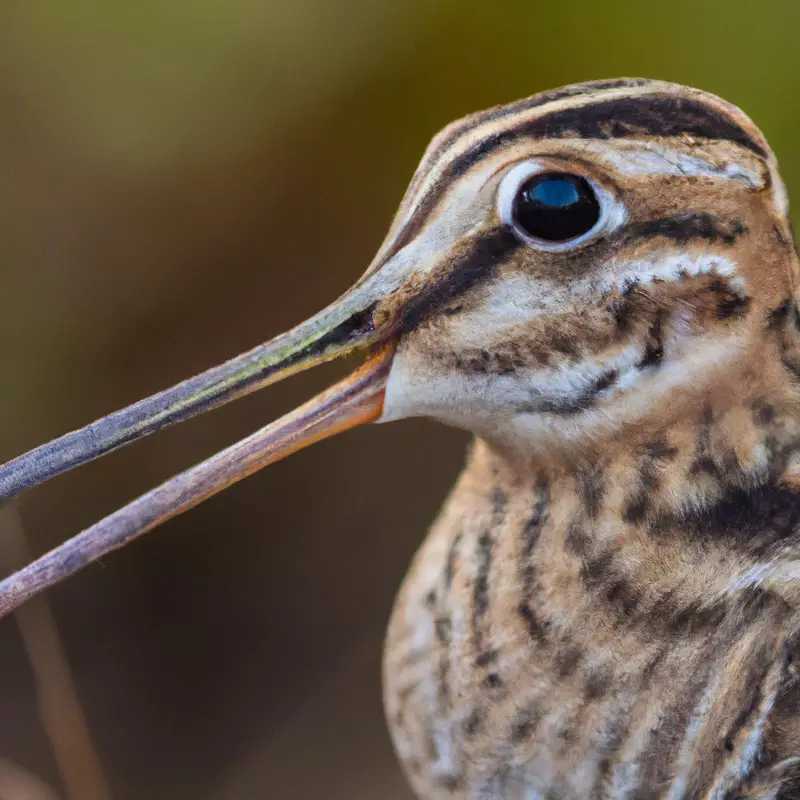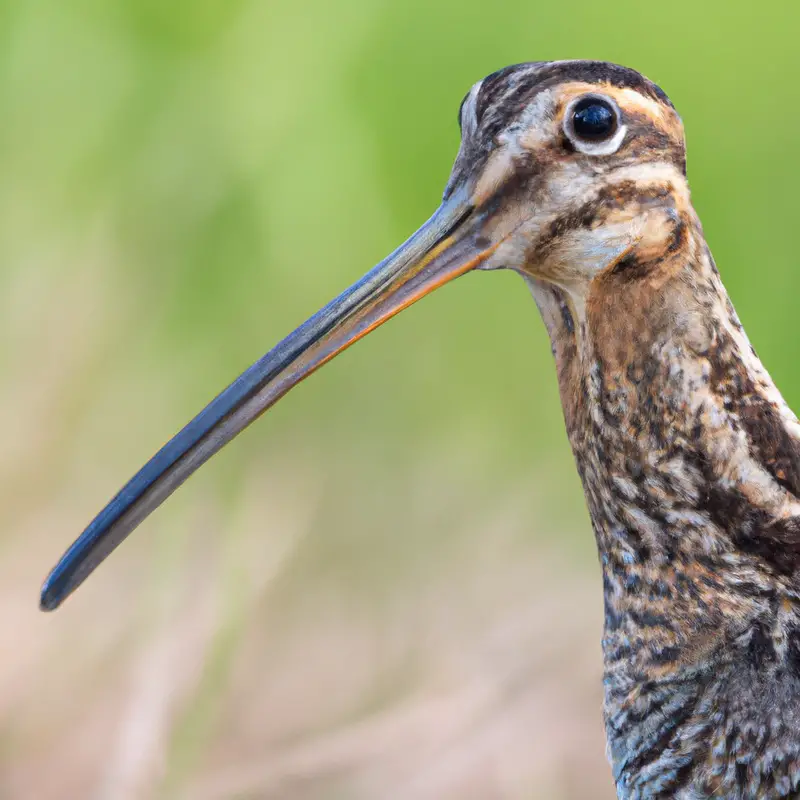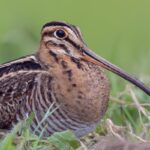Key Takeaways:
- Woodcock hunting in Connecticut is a popular and well-regulated sport.
- The woodcock population in Connecticut has been stable in recent years.
- Hunters must obtain proper licensing and follow strict regulations while hunting woodcock in the state.
- Early morning and late evening are the best times to hunt woodcock in Connecticut.
Imagine you’re walking through the woods on a crisp autumn morning.
The leaves crunch beneath your boots as you navigate the dense underbrush, anticipation coursing through your veins.
Suddenly, a flurry of wings breaks the silence as a woodcock takes flight.
This is the exhilarating experience of woodcock hunting in Connecticut.
As an avid hunter and expert in the field, I’m here to guide you through the ins and outs of this thrilling sport.
From licensing and regulations to habitat and behavior, I’ll provide you with all the information you need to embark on a successful woodcock hunting adventure in the picturesque state of Connecticut.
So, grab your gear and let’s dive into the world of woodcock hunting like never before!
Aspect | Information |
|---|---|
Location | Connecticut, United States |
Season | September – December |
Bag Limit | 3 per day |
Shooting Hours | 30 minutes before sunrise to sunset |
License and Permit | Valid Connecticut hunting license and HIP permit |
Firearm Restrictions | Shotguns only, 20 gauge or smaller |
Training Requirements | None |
What is Woodcock Hunting?
Importance of Woodcock Hunting in Connecticut
Woodcock hunting plays a significant role in Connecticut for several reasons.
Firstly, it helps in managing the woodcock population by keeping it in balance with the ecosystem.
This ensures the overall health and sustainability of the species.
Secondly, woodcock hunting contributes to the local economy through the purchase of licenses, equipment, and accommodations.
Additionally, it provides recreational opportunities for hunters, creating a sense of enjoyment and connection with nature.
The sport also encourages conservation efforts and supports habitat restoration projects.
All of these factors highlight the importance of woodcock hunting in Connecticut.

Regulations and Licensing for Woodcock Hunting in Connecticut
Obtaining a Hunting License in Connecticut
To obtain a hunting license in Connecticut, you must follow a few simple steps. First, you need to complete a hunter education course if you’re a first-time hunter or if your previous license expired more than five years ago.
Afterwards, you can purchase your hunting license online or at a participating vendor.
The cost will vary depending on your residency status and the type of license you need. Make sure to have identification and any required documentation, such as proof of residency, when applying.
Once you’ve obtained your license, you’re ready to enjoy the thrill of woodcock hunting in Connecticut!
Season Dates and Bag Limits for Woodcock Hunting
In Connecticut, the season dates for woodcock hunting usually begin in mid-October and end in early November.
However, it’s important to check the specific dates each year, as they can vary.
As for bag limits, you are allowed to harvest a maximum of three woodcock per day.
Make sure to comply with these regulations to ensure a safe and responsible hunting experience.

Required Equipment and Permits for Woodcock Hunting
To go woodcock hunting in Connecticut, there are some essential equipment and permits you’ll need. Firstly, you’ll need a valid Connecticut hunting license, which can be obtained through the Connecticut Department of Energy and Environmental Protection (DEEP).
Additionally, a Federal Migratory Bird Hunting and Conservation Stamp, commonly known as a Duck Stamp, is required for all migratory bird hunting, including woodcock hunting.
As for equipment, a shotgun, properly loaded with non-toxic shot, is necessary. It’s also recommended to have appropriate camouflage clothing, a hunting knife, and a game bag or vest to carry harvested woodcock.
Make sure to check the specific regulations and licensing requirements before heading out on your woodcock hunting adventure!
Habitat and Behavior of Woodcock in Connecticut
Preferred Woodcock Habitats in Connecticut
Woodcocks in Connecticut prefer habitats with moist, dense vegetation and a mix of trees and shrubs. They are often found in floodplains, young forests, and brushy areas near streams and wetlands.
Woodcocks are attracted to areas with soft, moist soils where they can probe for earthworms and other invertebrates with their long bills.
These birds also require areas with enough cover to conceal their ground nests. Preferred woodcock habitats in Connecticut include damp thickets, damp forests, and moist fields near water sources.
Woodcock Migratory Patterns in Connecticut
Woodcock, a migratory bird, exhibits predictable patterns in Connecticut.
During spring and fall, woodcock migrate between their breeding grounds in the northern U.S. and Canada to their wintering grounds in the southern U.S. and Mexico.
In Connecticut, you’ll find woodcock primarily in areas with dense cover, such as wetlands and shrubby habitats.
These birds prefer damp soil for feeding on earthworms.
It’s essential to note that woodcock’s migratory patterns vary slightly each year, influenced by weather conditions and food availability.
By understanding their habitat and migration trends, you can improve your chances of spotting woodcock in Connecticut.
Tips for Successful Woodcock Hunting in Connecticut
Choosing the Right Hunting Grounds
Choosing the right hunting grounds is essential for a successful woodcock hunting experience.
Here are some tips to help you find the right location:
- Look for areas with dense cover such as thickets, overgrown fields, and wetlands.
- Find places near water sources like rivers, streams, or lakes as woodcocks are attracted to these areas.
- Seek out locations with a variety of habitat types, including young forests and areas with shrubs or saplings.
- Talk to local hunters or join hunting clubs to get recommendations on the best hunting grounds in your area.
Remember, scouting and exploring different areas before the hunting season can greatly increase your chances of finding woodcocks.
Good luck!
Optimal Time of Day for Woodcock Hunting
The optimal time of day for woodcock hunting is during the early morning or late evening. Woodcocks are most active during these times, as they feed in moist areas like swamps and damp woods.
They tend to be less active during the middle of the day when the sun is high and temperatures are warmer.
As morning and evening approach, woodcocks use their beaks to probe the ground for earthworms and other insects, making it the ideal time for hunting. So, plan your hunting trips accordingly to maximize your chances of a successful woodcock hunt.
Locating and Identifying Woodcock
When you’re hunting woodcock in Connecticut, locating and identifying these birds is key. One effective way to locate woodcock is by listening for their distinctive call, a high-pitched “peent” sound.
Look for wooded areas with wet soil, as woodcock typically feed on earthworms in moist ground.
Keep in mind that woodcock prefer brushy and dense cover, so look for areas with thickets and shrubs. To identify woodcock, focus on their unique appearance with a stocky build, long bill, and mottled brown plumage.
Their short, rounded wings and erratic flight patterns also help distinguish them from other birds.
Effective Woodcock Hunting Techniques
To effectively hunt woodcock in Connecticut, there are a few techniques you can try. First, scout the area beforehand to find suitable locations like wetlands or thick brush where woodcock usually gather.
When hunting, make sure to move quietly and slowly as woodcock are easily startled.
Use a shotgun with a modified choke and smaller shot size to better hit the small target. Finally, consider using a hunting dog to help locate and retrieve downed birds.
Happy hunting!
Safety Guidelines for Woodcock Hunting
Importance of Firearm Safety
Firearm safety is of paramount importance when it comes to hunting.
It ensures the well-being of everyone involved and minimizes the risk of accidents.
Proper firearm safety involves treating every firearm as if it is loaded, always pointing the muzzle in a safe direction, and keeping your finger off the trigger until ready to shoot.
Additionally, wearing appropriate protective gear, being aware of the surroundings, and following local hunting regulations are crucial for ensuring a safe hunting experience.
By practicing these safety measures, you can enjoy your hunting adventures while prioritizing the safety of yourself and others.
Proper Handling of Hunting Dogs
Proper handling of hunting dogs is essential for a successful and safe hunting experience. Firstly, make sure your dog is properly trained and responsive to commands.
This will help you maintain control in the field and ensure the safety of your dog, other hunters, and wildlife.
Secondly, always provide your dog with plenty of water and breaks during hunts to prevent overheating and exhaustion. Thirdly, be mindful of hazardous terrain and potential dangers such as poisonous plants or animals.
Lastly, remember to clean and care for your dog’s paws and check for any injuries after each hunting session.
By prioritizing the well-being and safety of your hunting dog, you can enhance the overall hunting experience.
Protective Gear and Clothing for Woodcock Hunting
For woodcock hunting, it’s important to have the right protective gear and clothing. You’ll want to wear camouflaged clothing that blends in with the surroundings.
This will help you remain hidden from the woodcocks.
Additionally, make sure to wear sturdy boots that provide good ankle support, as you’ll be walking in uneven terrain. Furthermore, it’s a good idea to wear protective eyewear to shield your eyes from any flying debris.
Lastly, don’t forget to bring a hat to protect your head from the sun and insects.
Woodcock Hunting Accessories and Gear
Essential Gear for Woodcock Hunting
When it comes to woodcock hunting, there are a few essential gear items that you’ll want to have with you.
Firstly, a reliable shotgun is a must-have.
Look for one with a gauge that you’re comfortable using.
Secondly, a pair of high-quality hunting boots is crucial for navigating through different terrains.
Make sure they’re waterproof and provide good ankle support.
Thirdly, a hunting vest with plenty of pockets will come in handy for carrying shotshells, extra gear, and your woodcock license.
Lastly, don’t forget your hunting dog and a reliable whistle for communication.
Happy hunting!
Recommended Shotguns and Ammunition
If you’re going woodcock hunting in Connecticut, here are my recommendations for shotguns and ammunition. For shotguns, a 20-gauge or 28-gauge shotgun with a shorter barrel and lighter weight is ideal for maneuvering through dense cover.
Some popular options include the Browning A5, Beretta A400, and Remington 870.
As for ammunition, choose small shot sizes like #7.5 or #8 for improved pattern density. Be sure to check your state regulations for any specific requirements.
Happy hunting!
Useful Tools and Equipment for Woodcock Hunting
When going woodcock hunting, there are a few useful tools and equipment you should consider bringing along.
These items can help enhance your hunting experience and increase your chances of success.
Here’s a list of some essential tools and equipment for woodcock hunting:
- Shotgun: A reliable shotgun, preferably a 20 or 28 gauge, is necessary for taking down woodcock. Make sure you are comfortable with the weight, length, and action type of your chosen shotgun.
- Ammunition: Use appropriate ammunition for woodcock hunting, such as light loads with small shot sizes like 7.5 or 8. This will help minimize damage to the bird and provide effective shots.
- Hunting Vest: A good hunting vest with multiple pockets can be incredibly handy for carrying extra ammunition, water, snacks, and other small gear while keeping your hands free.
- Hunting Boots: Invest in a comfortable pair of waterproof and breathable hunting boots that provide good traction. Woodcock hunting often involves walking through wet and muddy terrain, so proper footwear is crucial.
- Blaze Orange Hat or Vest: For safety reasons, wear a blaze orange hat or vest to increase your visibility to fellow hunters in the area.
- Game Bag: A durable and spacious game bag is essential for carrying harvested woodcock. Look for a bag with a waterproof lining to keep the birds dry if it starts to rain.
- Hunting Dog and Accessories: A well-trained hunting dog can be a valuable asset during woodcock hunting. Consider bringing your canine companion along and make sure they have proper identification, a reliable leash, and water and food bowls.
- GPS or Maps: Familiarize yourself with the hunting area and consider using a GPS device or physical maps to help navigate the terrain and avoid getting lost.
Remember to check your local hunting regulations and obtain the necessary permits before heading out.
By having these useful tools and equipment on hand, you can have a more enjoyable and successful woodcock hunting experience.
Ethics and Conservation in Woodcock Hunting
Responsible Hunting Practices
Responsible hunting practices are essential for ethical and sustainable hunting.
Here are some key considerations:
- Know and follow all local laws and regulations regarding hunting seasons, bag limits, and licensing requirements.
- Respect private property rights and obtain permission before hunting on someone else’s land.
- Practice firearm safety by treating every firearm as if it is loaded, pointing the muzzle in a safe direction, and keeping your finger off the trigger until ready to shoot.
- Aim for a clean and ethical harvest by taking only ethical shots within your effective range, ensuring a quick and humane kill.
- Properly handle and transport harvested game, ensuring that it is clean, cooled, and processed in a timely manner.
- Respect and conserve wildlife habitats by minimizing disturbances and leaving no trace while hunting.
Supporting Woodcock Conservation Efforts in Connecticut
Connecticut is home to a diverse range of bird species, including the woodcock. To support woodcock conservation efforts in the state, there are several actions you can take.
Consider volunteering for local conservation organizations that focus on protecting bird habitats.
You can also contribute by participating in citizen science programs, such as bird counts and nest monitoring. Additionally, support land conservation initiatives that aim to preserve critical woodcock breeding and feeding areas.
By getting involved, you can make a positive impact on woodcock conservation in Connecticut.
Frequently Asked Questions (FAQs)
Can I Hunt Woodcock in Connecticut without a License?
No, you cannot hunt woodcock in Connecticut without a license.
In Connecticut, as in most states, a hunting license is required to legally hunt any species of wildlife, including woodcock.
This license helps fund conservation efforts and ensures that hunters follow the necessary regulations and guidelines for ethical and sustainable hunting practices.
So, if you’re planning to hunt woodcock in Connecticut, make sure to obtain the appropriate hunting license beforehand.
What is the Best Time of Year for Woodcock Hunting in Connecticut?
The best time of year for woodcock hunting in Connecticut is during the months of October and November. This is when the woodcocks are migrating through the state, making it an ideal time to pursue them.
During this period, the woodcocks are more active and can be found in their preferred habitats, such as wet areas and thick cover.
It’s important to check the local regulations and obtain the necessary licenses before heading out on your hunting adventure. Happy hunting!
Can I Hunt Woodcock on Public Lands?
Yes, you can hunt Woodcock on public lands in Connecticut. Public lands, such as state forests and wildlife management areas, provide opportunities for hunting Woodcock.
However, it’s important to check the specific regulations and guidelines for the public land you plan to hunt on.
Remember to obtain the necessary licenses and permits, follow all hunting seasons and bag limits, and practice safe and ethical hunting practices while enjoying your Woodcock hunt on public lands.
How Do I Properly Field Dress a Woodcock?
To properly field dress a woodcock, start by plucking the feathers from the breast area. Use a sharp knife to make a small incision at the base of the breastbone.
Carefully cut along the breastbone, avoiding the entrails.
Reach into the cavity and remove the organs, taking care not to puncture the intestines. Rinse the bird with cold water to clean it thoroughly.
Finally, pat the bird dry and store it in a cool place until you’re ready to cook it.
Enjoy your freshly dressed woodcock!
Are There Any Hunting Restrictions in Certain Areas of Connecticut?
In certain areas of Connecticut, there are some hunting restrictions in place. These restrictions aim to protect wildlife populations and ensure a sustainable hunting environment.
Some common restrictions include specific hunting seasons and bag limits for certain species.
Additionally, there may be designated areas where hunting is prohibited, such as state parks or private properties. It’s important for hunters to familiarize themselves with the regulations of the specific area they plan to hunt in, as these restrictions can vary.
Final Verdict
Woodcock hunting in Connecticut is not only a thrilling sport but also an important conservation effort.
With proper licensing and adherence to regulations, hunters can enjoy a rewarding and responsible hunting experience.
Understanding the habitat and behavior of Woodcock, along with effective hunting techniques, greatly increases the chances of success.
Safety measures and ethical hunting practices should always be followed to protect oneself and preserve the Woodcock population.
By supporting conservation efforts and practicing responsible hunting, we can ensure the future of Woodcock hunting in Connecticut, while enjoying its natural beauty and challenges.








